
The General Motors Company (GM) is an American multinational automotive manufacturing company headquartered in Detroit, Michigan, United States. It is the largest automaker in the United States and was the largest in the world for 77 years before losing the top spot to Toyota in 2008.

Chevrolet, colloquially referred to as Chevy and formally the Chevrolet Motor Division of General Motors Company, is an American automobile division of the American manufacturer General Motors (GM). Louis Chevrolet (1878–1941) and ousted General Motors founder William C. Durant (1861–1947) started the company on November 3, 1911 as the Chevrolet Motor Car Company. Durant used the Chevrolet Motor Car Company to acquire a controlling stake in General Motors with a reverse merger occurring on May 2, 1918, and propelled himself back to the GM presidency. After Durant's second ousting in 1919, Alfred Sloan, with his maxim "a car for every purse and purpose", would pick the Chevrolet brand to become the volume leader in the General Motors family, selling mainstream vehicles to compete with Henry Ford's Model T in 1919 and overtaking Ford as the best-selling car in the United States by 1929 with the Chevrolet International.

McLaughlin Motor Car Company Limited was a Canadian manufacturer of automobiles headquartered in Oshawa, Ontario. Founded by Robert McLaughlin, it once was the largest carriage manufacturing factory in the British Empire.

Charles Williams Nash was an American automobile entrepreneur who served as an executive in the automotive industry. He played a major role in building up General Motors as its 5th President. In 1916, he bought Thomas B. Jeffery Company, makers of the popular Rambler automobile, renamed it Nash Motors, and played an independent role in an automobile industry increasingly dominated by the Big Three: General Motors, Ford, and Chrysler. His profits came from focusing on one well-designed car in the upper-medium price range. He bought several distressed companies in Wisconsin, merging them and installing advanced managerial accounting procedures while cutting costs and focusing on long-term growth. He retired as president in 1932, but remained chairman of the board. His major acquisition was the merger in 1937 with the Kelvinator Company, which made refrigerators. During World War II, Nash-Kelvinator greatly expanded to manufacture aircraft engines and parts.

William Crapo Durant was a leading pioneer of the United States automobile industry and co-founder of General Motors and Chevrolet. He created a system in which a company held multiple marques – each seemingly independent, with different automobile lines – bound under a unified corporate holding company. Durant, along with Frederic L. Smith, co-founded General Motors, as well as Chevrolet with Louis Chevrolet. He also founded Frigidaire.
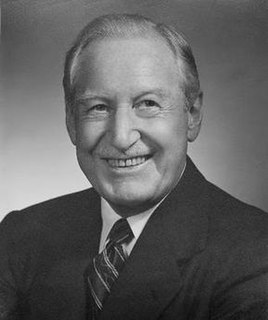
Harlow Herbert Curtice was an American automotive industry executive who led General Motors (GM) from 1953 to 1958. As GM's chief, he was selected as Man of the Year for 1955 by Time magazine.
Flint East was an automobile component production complex owned by Delphi Corporation in Flint, Michigan. The complex, parts of which were over 100 years old, was located on Dort Highway, stretching along Robert T. Longway Boulevard past Center Road. The plant produced numerous automotive components, including instrument panels, instrument clusters, spark plugs, filters, air meters, fuel pumps and other parts. Flint East once employed nearly 14,000 people, but by 2007, the number was down to nearly 1,100 hourly workers. The plant closed entirely in November 2013 and the remaining buildings were razed. In 2017, Phoenix Investors, a Wisconsin-based commercial real estate firm, purchased the land.
Delco Electronics Corporation was the automotive electronics design and manufacturing subsidiary of General Motors based in Kokomo, Indiana, that manufactured Delco Automobile radios and other electric products found in GM cars. In 1972, General Motors merged it with the AC Electronics division and it continued to operate as part of the Delco Electronics division of General Motors. When the corporation acquired the Hughes Aircraft Company, Delco was merged with it to form Hughes Electronics as an independent subsidiary.

Rochester Products Division (RPD) was a division of General Motors that manufactured carburetors, and related components including emissions control devices and cruise control systems in Rochester, New York. In 1995 Rochester became part of Delphi, which in turn became a separate company four years later, and continues to manufacture fuel injection systems in Rochester, now part of General Motors Automotive Components Holdings- Rochester Operations.

In the late 1920s, American automotive company General Motors (GM) launched four companion makes to supplement its existing lineup of five-passenger car brands, or makes. The companion makes were LaSalle, introduced for the 1927 model year to supplement Cadillac; Marquette, introduced in 1929 for 1930 to supplement Buick; Pontiac, introduced for 1926 to supplement Oakland; and Viking, introduced for 1929 to supplement Oldsmobile. GM's fifth existing brand, Chevrolet, did not receive a companion make. With the exception of Viking, each of the companion makes were slotted below their "parent make" in GM's pricing hierarchy.
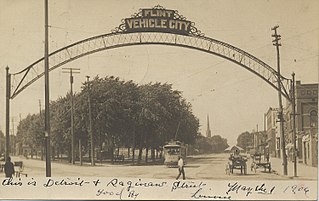
Flint, Michigan is a city which previously relied on its automotive industry, and still does to an extent. Over the past several decades, General Motors plants in Genesee County have experienced re-namings, management shifts, openings, closures, reopenings, and spinoffs.
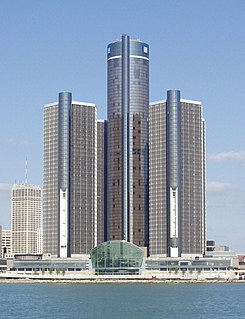
The history of General Motors (GM), one of the world's largest car and truck manufacturers, dates back more than a century and involves a vast scope of industrial activity around the world, mostly focused on motorized transportation and the engineering and manufacturing that make it possible. Founded in 1908 as a holding company in Flint, Michigan, as of 2012 it employed approximately 209,000 people around the world. With global headquarters at the Renaissance Center in Detroit, Michigan, United States, General Motors manufactures cars and trucks in 35 countries. In 2008, 8.35 million GM cars and trucks were sold globally under various brands. Current auto brands are Buick, Cadillac, Chevrolet, GMC, and Wuling. Former GM automotive brands include La Salle, McLaughlin, Oakland, Oldsmobile, Opel, Pontiac, Hummer, Saab, Saturn, Vauxhall, Daewoo and Holden.
Remy International, Inc. headquartered in Pendleton, Indiana is an American manufacturer, remanufacturer, and distributor of light duty starters, alternators, hybrid power technology, and Delco Remy brand heavy duty systems. Remy has facilities in eleven countries and four different continents around the world.
General Motors Customer Care and Aftersales (CCA), formerly GM Service Parts Operations (SPO), is a division of General Motors that supplies replacement parts, and automotive service through GM's network of Dealers. For Non-GM vehicles, ACDelco supplies replacement and repair parts for GM and Non-GM vehicles in over 100 countries around the world. GM Accessories supplies performance, functional, entertainment and appearance automotive accessories for all GM vehicle brands worldwide.
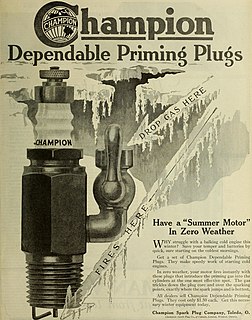
Champion is an American brand of spark plug.
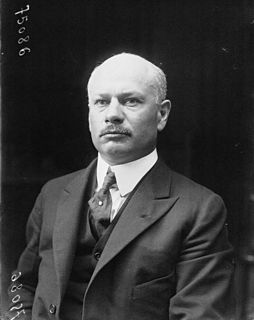
Albert Champion was a French track bicycle racer and later an industrialist who won the 1899 Paris–Roubaix. In 1905 he incorporated the Albert Champion Company in Boston to make porcelain spark plugs with his name on them. Three years later founded the Champion Ignition Company in Flint, Michigan. In 1922 he changed the name to AC Spark Plug Company, after his initials, to settle out of court with his original partners in the Albert Champion Company. The company is now known as ACDelco and is owned by General Motors.

The Chevrolet Superior Series F was launched in 1923, manufactured by Chevrolet for four years with a different series per year. The 1923 model was known as the Series B, the 1924 model was the Series F, for 1925 it was known as the Series K and the 1926 Superior was known as the Series V. It was replaced in 1927 by the Series AA Capitol. It was the first Chevrolet that didn't have a larger companion model and was the only car sold by Chevrolet in several body style configurations all supplied by Fisher Body. Each year new mechanical changes, appearance updates or optional features that became standard in subsequent years became expected of all GM products including Chevrolet. Body styles were separated into open and closed which meant closed included retractable glass in the doors and glass surrounding rear seat passengers. Standard items included tools, a jack for tire removal, speedometer, outside lockable door handles, ammeter, oil pressure gauge, dashboard light, choke pull knob, electric horn, ignition theft lock, and a two piece vertical ventilating windshield that allowed fresh air to enter the passenger compartment. Wheels were 30" and came standard with hickory wood spokes or optional pressed steel discs. For 1925, bumpers were offered optionally along with outside side view mirrors, heater for passenger compartment and a clock.
Gary W. Dickinson was an automotive industry executive.
Harrison Radiator Corporation was an early manufacturer of automotive radiators and heat exchangers for crewed spacecraft and guided missiles, as well as various cooling equipment for automotive, marine, industrial, nuclear, and aerospace applications, that became a division of General Motors in 1918. Today its business is a part of General Motors' Automotive Components Group, and is based in Lockport, Niagara County, New York.
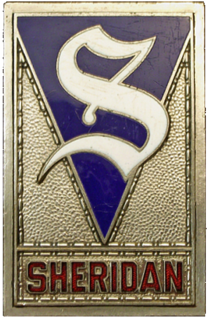
The Sheridan was a brand of American automobile manufactured from 1920 to 1921. Manufacture of the car was based in Muncie, Indiana. The Sheridan nameplate has the distinction of being the first automotive brand started from scratch by General Motors. Prior to the Sheridan, General Motors, under William (Billy) Durant, grew its automotive marques Chevrolet, Oakland, Oldsmobile, Buick and Cadillac, by acquiring independent manufacturers and then folding their operations into the GM structure.

















